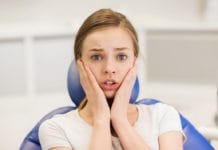Years ago, when working for a dental practice in Tulsa, Oklahoma, I encountered my first patient diagnosed with amyotrophic lateral sclerosis (ALS). The disease is often called Lou Gehrig’s disease, deriving its name after an American professional baseball player who played for the New York Yankees from 1923 to 1939. I knew about Lou Gehrig and the disease both because of my dad.
My father loved the Yankees and even tried out way back in the day. He may have been from Massachusetts, but his love of the Yankees was true. Gehrig’s baseball records lasted decades, and he was voted the greatest first basemen of all time. Annually, the Lou Gehrig Memorial Award is given to the MLB player who shows the best character and integrity. Those are qualities my dad emulated. I also appreciated the disease when my father’s coworker and close friend’s wife were afflicted in the 1980s.
I didn’t, however, know enough as a clinician to really help my patient. A lack of understanding about how exactly the disease was going to affect his oral health, the complications of dental procedures, and how to guide him and his caregiver for future health left me and him at a deficit. I only saw him once, leaving the practice before the disease had progressed.
What is ALS?
ALS is a neurodegenerative disease and is the most common motor neuron disease. It’s progressive and affects nerve cells in the cerebral cortex, brain stem, and spinal cord. In 90% of cases, there is no known family history or presence of a genetic mutation linked to ALS.1 Approximately 5,000 people are diagnosed every year, and the average life expectancy is two to five years. However, 5% to 10% of ALS patients survive more than 10 years.2 Every 90 minutes, someone is diagnosed or passes away from ALS.
ALS often begins in the hands, feet, or limbs. The nerve cells are destroyed, and the muscles become weaker. The progressive loss of muscle control will eventually prohibit the patient from speaking, swallowing, walking, and eventually breathing.
The condition does not affect the bladder, bowels, or thinking ability. If you have seen the movie The Theory of Everything about the physicist Steven Hawking, it clearly demonstrates how the mind isn’t influenced. He was nothing short of a miracle for living 40 years after a diagnosis at the age of 21. Men are stricken slightly more than women, and the age of onset is most common in middle age to older adults.
Tragically, military personnel are at greater risk of dying from ALS than people who have not served. Studies conducted that specifically looked at veterans from the 1991 Persian Gulf War found they were twice as likely to develop ALS as those who did not serve. In 2006, results showed it was not just the Gulf War; the connection was the military, regardless of branch of service or wartime involvement.3
Diagnosis and Symptoms
ALS is difficult to diagnose. No specific test is available, and a number of conditions mimic the symptoms, including stroke, multiple sclerosis, Parkinson’s, myasthenia gravis, or Lyme disease. If a person tests negative for all these health conditions but the symptoms continue to worsen, ALS is often then diagnosed.
Some of the earliest symptoms are trouble walking, weakened feet and hands, clumsiness, and the majority of patients will develop speech and swallowing difficulties as the disease progresses. At the onset of ALS, in 30% of cases, bulbar palsy or bulbar weakness occurs.4
Bulbar weakness is named for the nerves that originate from a bulblike part of the brainstem and is one of the most grievous features of a motor neuron disease. This is associated with difficulty in chewing, weakness of the facial muscles, dysarthria (difficulty with speech articulation), palatal weakness and regurgitation of fluids, dysphagia (difficulty swallowing), dysphonia (disorder of phonation), and sialorrhea.
Dysphagia is quite complex and related to tongue atrophy ‒ dysfunction in the soft palate and the larynx closure.5 This condition presents in more than 80% of patients during the advanced phases of the disease. It is caused by weakness of the lips, tongue, masseter muscles, soft palate, and esophagus. Oral, pharyngeal, and esophageal phases of swallowing, or a combination, may be affected.
Often, the first symptoms include coughing on thin liquids and dry, crumbly textures. The patient may have an impaired ability to chew, form a bolus, move it posterior with the tongue, and delay or difficulty swallowing. Reduced airway protection during swallowing leads to a risk for aspiration pneumonia. Dysphagia also can lead to dehydration and malnutrition.
Sialorrhea is one of the most disabling symptoms of ALS. It is not actually caused by an overproduction of saliva but the inability to swallow due to “tongue spasticity, orofacial and palatinolingual muscle control failure, facial weakness, and inability to maintain oral and buccal competence.”6 The treatment of the ALS patient’s sialorrhea can complicate their oral health.
A physician may prescribe medications that will reduce salivary flow, and dental clinicians should keep that in mind for caries prevention. Other than medication, a treatment to the parotid gland, which influences saliva, can be irradiated or paralyzed by injection of botulinum toxin.
Dental Practice Considerations
There are several areas we should be considerate of with ALS patients. All practices have different physical setups. Variables will present in accessibility and equipment, and our flexibility to modify will be helpful. We are required to be wheelchair accessible, yes, but can you give proper treatment from a wheelchair to avoid the difficulty of transfer? It will be easier for the patient at a certain point in the disease process to have treatment while in their wheelchair.
The patient’s medical intricacies require the most care. Since the patient may be unable to cough or clear their throat, a reclining position is contraindicated due to the increased chance of aspiration. A hyperactive gag reflex (hyperreflexia) can be viewed in different ways. The gag reflex may be seen as an assurance that any dental material lose in the mouth will not be aspirated.
However, a much more menacing and practical view is that stomach contents will be forced into the oropharynx and aspirated, resulting in respiratory crisis and possible patient death.7 If using a rubber dam for posterior procedures, consider that it may contribute to a gag reflex.
Serious dental work should be done as early as possible after the diagnosis to minimize complications.
Coughing productively with patients with ALS can be difficult. Taking a deep breath is hard, and respiratory therapists work with them on a technique called “air stacking.” They take a series of four to five smaller breaths to inflate their lungs incrementally, and then they have the air volume they need to produce an effective cough. This may be a conversation to have with the patient or the caregiver who may be present in the treatment room.
Dental Hygiene Concerns
During the hygiene visit, suctioning constantly and thoroughly is important to avoid choking on saliva. Sometimes caregivers take over with suctioning because they’re more familiar with signs from the patient and may suction the mouth frequently at home.
I landed on a blog written by an ALS patient who had just had a dental visit. She appreciated the use of a dental isolation system during her appointment; it held her mouth open, kept the tongue out of the way, and suctioned the water. She felt relaxed and was breathing easily.
- If you choose to use topical fluoride, consider that it may induce nausea and should be evaluated.
- Radiographs may be difficult for the patient. If unable to get bitewing radiographs, consider a panoramic or CBCT.
- If the patient has dentures and can still wear them, pay attention to the fit. ALS patients experience weight loss that may change how snug they are.
Frequent preventive visits could be in the patient’s best interest but could be a financial hardship. Medicare and some private health insurance may cover dental care. A prescription or letter from the ALS specialist can help ensure the coverage, although it’s not a guarantee.
Home Care Instructions
For an ALS patient, keep in mind that something as simple as turning the faucet on and off can be difficult ‒ not to mention squeezing the toothpaste, holding a toothbrush, or using a cup to rinse. You may recommend a hands-free toothpaste dispenser or electric toothbrush, for example.
Perhaps dry mouth rinses or tongue scrapers would be useful. As the disease progresses, a portable suction device and suction toothbrush such as Plak-Vak* could be advantageous. Occupational therapists are a wealth of information in this area.
ALS patients may also have tight jaws. Dispensing a rubber bite block may help the caregiver for home use. Keep on the lookout for grinding patterns, and if deemed appropriate and the patient can tolerate it, a night guard may be valuable. However, remember that night guards trigger salivation, which may be too much for some ALS patients.
No two people with ALS are alike, but most symptoms will in some way affect their oral health. Whether it is upper body symptoms that affect their ability for home care, head and neck symptoms of difficulty swallowing or excess saliva, or respiratory symptoms such as restricted breathing or trouble sleeping, we should take all into consideration to help guide our treatment.
As always, consider the beautiful human in our chairs. Ergonomically, it may be difficult for us to treat them, but it is worth the effort. Their minds are sharp, their vision and hearing are strong, and their taste and smell are not challenged. A big smile, a kind word, or gentle touch could go a long way.
If you or a loved one has been diagnosed with ALS and served in the military, there are resources to help here.
*This article is not sponsored by or has an affiliation with Plak-Vak. Plak-Vak was mentioned for purely educational purposes as a home care option to help patients with ALS.
Now Check Out the Peer-Reviewed, Self-Study CE Courses from Today’s RDH!
Listen to the Today’s RDH Dental Hygiene Podcast Below:
References
- What is ALS? (n.d.). ALS Association. https://www.als.org/understanding-als/what-is-als
- Chiò, A., Logroscino, G., Hardiman, O., et al. Prognostic Factors in ALS: A Critical Review. Amyotroph Lateral Scler. 2009; 10(5-6): 310-323. https://www.ncbi.nlm.nih.gov/pmc/articles/PMC3515205/
- Weisskopf, M.G., O’Reilly, E.J., McCullough, M.L., et al. Prospective Study of Military Service and Mortality from ALS. Neurology. 2005; 64(1): 32-37. https://pubmed.ncbi.nlm.nih.gov/15642900/
- Yunusova, Y., Plowman, E.K., Green, J.R., et al. Clinical Measures of Bulbar Dysfunction in ALS. Frontiers in Neurology. 2019; 10. https://www.frontiersin.org/articles/10.3389/fneur.2019.00106/full
- Onesti, E., Schettino, I., Gori, M.C., et al. Dysphagia in Amyotrophic Lateral Sclerosis: Impact on Patient Behavior, Diet Adaptation, and Riluzole Management. Front Neurol. 2017; 8: 94. https://www.frontiersin.org/articles/10.3389/fneur.2017.00094/full
- Banfi, P., Ticozzi, N., Lax, A., et al. A Review of Options for Treating Sialorrhea in Amyotrophic Lateral Sclerosis. Respir Care. 2015; 60(3): 446-454. https://pubmed.ncbi.nlm.nih.gov/25228780/
- Randall, S., Alfred, T. Dental Management of Long-term Amyotrophic Lateral Sclerosis: Case Report. Special Care in Dentistry. 1993; 13(6): 241-244. https://www.sci-hub.wf/10.1111/j.1754-4505.1993.tb01475.x












